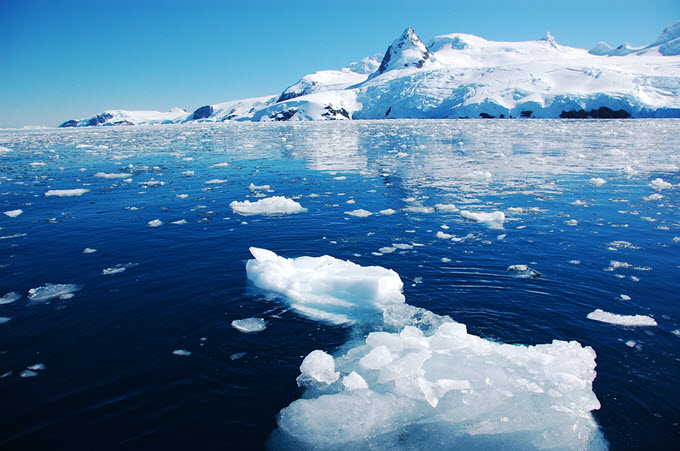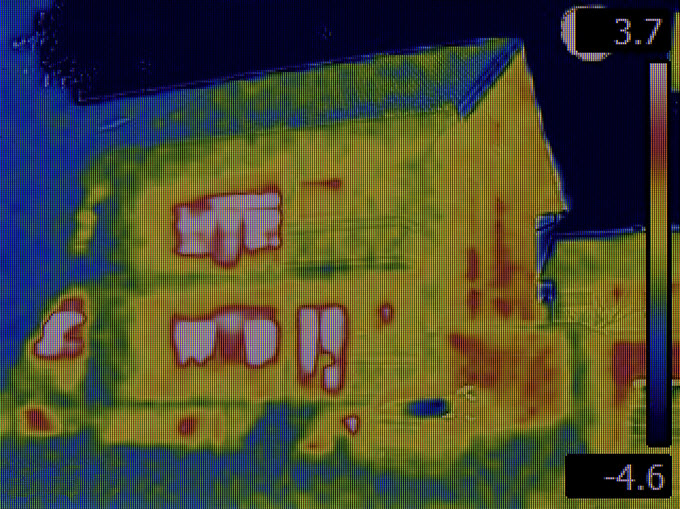- Home
- Health & Environment
- Green Living
 Green Living Calculation Tools & Utilities
Green Living Calculation Tools & Utilities

Table of Contents
- Overview
- Measuring Our Impact on the Environment
- How What We Eat Affects the Planet
- Reduce, Reuse, Recycle: How It All Pays Off
- The Cost of Polluting: How Harmful Chemicals and Gasses Affect Us
- Assessing Energy Efficiency
- Calculating Conservation
- The Environmental Benefits of Green Driving
Overview
The polar ice cap is shrinking. Eighty percent of the world's forests have been chopped down. Our freshwater use has skyrocketed. And as Princeton University notes, we've released so much carbon into the atmosphere that even if those emissions abruptly ended there would still be enough carbon present “to warm our planet for hundreds of years.”

When we have a better understanding of how our actions—as individuals, as families, as schools, as businesses—impact the world in which we live, we can make better, greener decisions and begin to reverse some of the damage we've done.
This is a collection of 50 “green” calculators, which measure how human behavior affects the world. In addition to assessing how we affect the environment, many of them also provide advice on how we can change our lifestyles to ensure that Planet Earth is a cleaner, safer place for us all to live.
Measuring Our Impact on the Environment
Do you ride in a car every day? Do you eat foods from outside your local area? Do you take long showers? Each of the decisions you make in these areas and many others has a direct impact on the environment. Assess how you're impacting the planet by using the resources below:
The Greendex - Created by National Geographic, The Greendex surveys consumers and assesses their environmental impact based on their responses to questions about what they eat, where they live, how they get around, and more.
Personal Energy Meter - Also from National Geographic, the Meter asks, “Are You Energy-Wise or Are You an Energy Waster?” Use it to find your energy-use level and compare yours to others.
Ecological Footprint - Global Footprint Network introduces this quiz, which allows you to find out how much land is needed to support your way of living and explains what you can do to “tread more lightly on earth.”
Measuring Your Local Footprint - The World Wildlife Fund has created region-specific calculators so that you can measure how you impact your local area. They are available for the following countries:
- Australia
- China
- Belgium (Dutch) (French)
- Germany
- Greece
- Hong Kong
- Italy
- Netherlands
- Switzerland
- United Kingdom
Reduce Your Impact on the Planet - Created for students by the Environmental Protection Agency, users are asked questions about their everyday habits (e.g., “Turn off the water when you brush your teeth.”). They mark whether they already take the action or will commit to take the action. The results expressed are the total impact that would be created if all students in the U.S. took similar actions.
Climate Impact - From Quakers for Sustainability, users can find out how their transportation, eating, waste, and other actions impact the environment.
ZeroFootPrint Youth - Designed for kids, ZeroFootPrint helps students analyze decisions they make regarding transportation, food, energy use, and waste to find out how they can make changes to reduce their footprint.
Carbon Footprint
Carbon Footprint - The Nature Conservancy helps users measure their carbon footprint as individuals and for their households and provides information on how to offset your footprint.
Do You Know Your Environmental Impact? - Developed by NASCAR Green, measure how much greenhouse gas emissions your transportation and waste habits create.
What is Your Carbon Footprint? – This tool from the EPA takes a look at three areas—home energy, transportation, and waste—to figure out your carbon footprint. Get a more accurate reading by entering exact data using your utility bills.
Carbon Calculator – Just Energy asks a series of questions, including what kind of car you drive and the average cost of your monthly bills, and then assesses your carbon footprint.
Carbon Footprint Estimate – Enter your city, state, and zip code, the number of people in your household, and the gross annual income of your household to see how your carbon footprint estimate measures up against the national average.
Carbon Footprint Calculator – This interactive tool from Conservation International allows you to find out your carbon footprint or that of an event or trip. It, then, provides information on how to offset the footprint.
How What We Eat Affects the Planet
You've heard the phrase, “You are what you eat.” Well, in many ways, the planet is what we eat, too. That's because there is an environmental impact associated with every food or beverage that we put in our bodies. To learn more about how what you eat affects earth, use the following tools:
Eating Green - Enter the number of weekly servings you consume in the provided food groups to find out how your diet impacts the environment.
Food Carbon Emissions - Whether you're eating meat, fruits, or vegetables, carbon was emitted to bring that food to your table. Use the drop down menus to find out how much carbon is emitted during the production of each type of food during its production and transport.
Food Carbon Footprint - Using a recent grocery shopping receipt, answer the questions provided to find out your food carbon footprint.
Food Miles - Have you ever thought about how far your food had to travel before it reached your table? As you'll learn by using this calculator, that distance helps determine your foods' overall environmental impact.
How Vegetarians Help the Environment - In addition to saving the lives of animals, vegetarians are good for the environment. If you're a vegetarian, find out how much carbon you've helped keep out of the atmosphere.
Reduce, Reuse, Recycle: How It All Pays Off

Reduce, Reuse, Recycle! These are the 3 Rs of protecting the environment and they're one of the first lessons we learn about living greener lives. But how much of a difference do the 3 Rs really make? Find out by accessing these tools:
Conversionator - From the National Recycling Coalition, the Conversionator provides facts about recycling aluminum, paper, and plastic. Enter how much you recycle each week to find out how much energy you've helped to save.
Energy Saved from Recycling Glass - Enter the number of glass containers you recycle each week. The results provided explain what you could do with the energy saved from your recycling.
The Benefits of Responsibly Recycling Your Electronics - What happens to your electronics when you're done with them? It's possible to recycle them and in doing so you can prevent carbon emissions from being released into the atmosphere.
Paper Usage - Find out how your paper usage affects the environment and learn how making different choices can reduce your impact on the environment.
The Environmental Impact of Recycling Ink Cartridges - Recycling ink cartridges can also help reduce carbon emissions. Use the drop down menus to input how many ink and toner cartridges you recycle each month to find how you've helped.
Environmental Footprint - The Impact of Recycling - Enter the number of pounds you recycle in each category (mixed paper, commingled materials, scrap metal, and electronics) and then find how many trees, gallons of oil, hours of electricity, and/or gallons of water you help save each year.
The Cost of Polluting: How Harmful Chemicals and Gasses Affect Us

Every day, individuals, institutions, businesses and other entities pump harmful chemicals and gasses into the environment. These calculators help assess how those emissions pollute the air we breathe:
Measuring AQI - How dangerous is the air you're breathing? Find out by selecting a gas emission and the amount present in the air. The results will give you an assessment of the air's overall quality and will inform you what groups might be most in danger.
Electric Power Pollution - Harmful gasses are released into the air in order to produce the electricity you use. Enter how many KWHs you use each month and what kind fuel is used to produce your electricity to see how many pounds of harmful gasses--such as Sulfur Dioxide and Oxides of Nitrogen--result from your usage.
Greenhouse Gas Equivalencies - Learn how reducing carbon emissions affects the environment. Enter your data and then results are produced in easy-to-understand equivalencies. For example, 100 gallons of gasoline produces .889 metric tons of carbon dioxide which is the equivalent of 955 pounds of coal burned.
Greenhouse Gas Calculator - From the National Asphalt Pavement Association, this calculator finds the greenhouse gas emissions related to asphalt pavement manufacturing.
Handy-Dandy Carbon Tax Temperature-Savings Calculator - Created by the CATO Institute, this tool will find how much of a global temperature increase can be averted based on the inputted percentage reduction of carbon dioxide emissions.
Assessing Energy Efficiency

According to the Massachusetts Clean Energy Center, clean energy is “heat and electricity produced from renewable sources.” Tapping into natural, renewable energy resources like solar and wind energy is much better for the environment. Use these resources to learn more about these energy sources and how they can be used to create a cleaner, healthier world:
Energy Unit Converters – The U.S. Energy Information Administration provides several energy unit converters. They serve as a great introduction into how energy use is measured and assessed.
Power Profiler – From the EPA, the Power Profiler shows how clean the electricity in your hometown is.
Solar Energy Calculator – As Energy Saving Trust explains, the use of solar energy is not only good for the environment, it actually saves users money. Use the provided estimator to find out how much you could save.
System Sizing for Solar Energy – Thinking of making the switch to solar energy? If so, follow this three-step process to find out what size solar energy system you'll need to cover 100 percent of your usage.
Solar and Wind Estimator – Learn what size solar and wind energy system you would need and the cost of installation based on your zip code using this estimator.
KidWind's Performance Calculator – TheKidWind Project challenges students to build their own wind turbine. Then, students can calculate how powerful their turbine is using this tool.
How Efficient Is Your Home? – Is your home as energy efficient as it could be? Answer these easy questions to get a report that explains how you can use less energy and save money.
Calculating Conservation
Making an effort to conserve is something we can all do to help improve the environment and end the dangerous changes that threaten the planet. The tools below help you assess how you consume resources such as energy and water so that you can live a greener lifestyle.
Energy
Quick Energy Savings – Take National Geographic's Great Energy Challenge by getting an assessment of the biggest “energy hogs” in your home and discover opportunities where you can save.
Green Footstep – New building projects have a definite affect on global warming. This calculator can be used to find out how to have a carbon-neutral construction project.
Saving Money Through Energy-Efficient Appliances - Energy Star products use less energy than traditional products. Use these calculators to find out how an Energy Star air conditioning unit, dehumidifier, furnace, and more could help you save money while also helping the environment.
Water
Water Conservation – Did you know you can conserve water simply by changing your fixtures? Use this tool to assess how much water you're using and how to use less by installing different fixtures.
How Much Water Do You Use? – Assess how you use water in your home and then implement the conservation tips provided by the Alliance for Water Efficiency.
Measuring Water Use – Assess how much water your household uses through showers, baths, doing the dishes, and so on and then accept the challenge to save 10 percent.
Your Water Footprint – In addition to the water you use directly in your home and daily life, Grace Communications Foundation explains that water is “hidden” in the food you eat, energy you consume, and purchases you make. Find out your water footprint and learn how you can make changes to lower your impact.
What is Your Water Footprint? – Answer a few simple questions about your water habits and then find out what you can do to reduce your water consumption.
Drip Calculator – The American Water Works Association provides this online tool to help you figure out how much water you might be wasting via leaky and fast-running faucets.
Make Every Drop Count – Take this simple survey provided by The Water Conservation School to find out how many gallons of water you use each year.
Green Driving Environmental Benefits

As the Union of Concerned Scientists notes in this article, “transportation is the largest single source of air pollution in the United States.” By changing how much and what you drive, you can help reduce the amount of damage driving has on the environment.
My Trip – From the Department of Energy, find out the fuel cost of your next big trip and compare the fuel efficiency of different types of vehicles.
Can a Hybrid Save Me Money? – Find out if the money you would save in fuel costs makes it more economical to purchase a hybrid versus a non-hybrid vehicle. Use the drop down menu to select a hybrid and the program will automatically make the comparison to the non-hybrid version.
eGallon: Compare the Costs of Driving with Electricity – Use eGallon to find out how much money in fuel costs you could save if you drove an electric car. Select your state from the drop down menu and the results are provided instantly.
Electric Vehicle Savings – Enter the gasoline cost and electricity cost in your area to find out how much you could save by switching to an electric vehicle.
